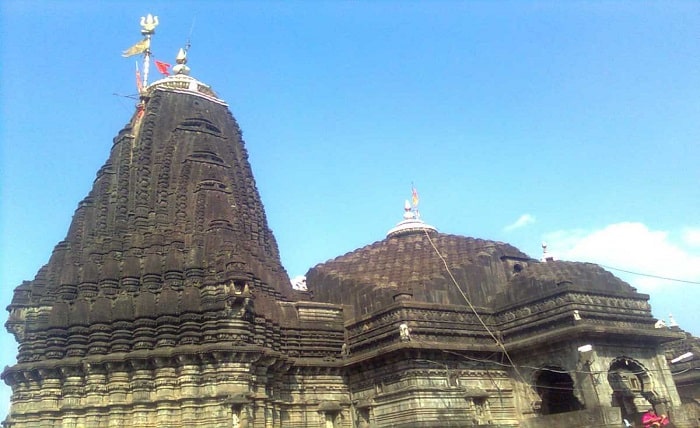12 Jyotirlingas in India: The Spiritual Abodes of Lord Shiva

Jyotirlingas are the sacred shrines of Lord Shiva, where he is worshipped as a pillar of light. The word jyotirlinga means “the radiant sign of Shiva” and it represents his infinite and formless nature. There are 12 jyotirlingas in India, spread across different states and regions. Each jyotirlinga has its own legend and significance and attracts millions of devotees every year. In this blog post, we will explore the 12 jyotirlingas in India and learn about their history, mythology and importance.
Somnath Jyotirlinga in Gir, Gujarat
Somnath is the first and the most revered jyotirlinga in India. It is located in the Saurashtra region of Gujarat, near the Arabian Sea. According to the legend, Lord Shiva appeared here as a fiery column of light to settle a dispute between Lord Brahma and Lord Vishnu, who were arguing about their supremacy. Lord Shiva declared that whoever could find the end of the light would be the superior one. Lord Vishnu took the form of a boar and went downwards, while Lord Brahma took the form of a swan and went upwards. However, neither of them could find the end of the light. Lord Vishnu admitted his defeat, but Lord Brahma lied that he had reached the top and brought a ketaki flower as a witness. Lord Shiva cursed Lord Brahma for his falsehood and declared that he would not be worshipped by anyone. He also blessed Lord Vishnu for his honesty and named him as Harihar, the combined form of Vishnu and Shiva.
Read more about Gangtok
Somnath temple is one of the oldest and most magnificent temples in India. It has been destroyed and rebuilt several times by various invaders and rulers. The current temple was built in 1951 by Sardar Vallabhbhai Patel, the first deputy prime minister of India. The temple has a stunning architecture and a rich collection of sculptures and inscriptions. The temple also houses a museum, a library and a light and sound show. The temple is visited by thousands of pilgrims every day, especially during the festivals of Mahashivaratri, Kartik Purnima and Shravan month.
Mallikarjuna Jyotirlinga in Srisailam, Andhra Pradesh
Mallikarjuna is the second jyotirlinga in India. It is located in Srisailam, on the banks of the Krishna river in Andhra Pradesh. According to the legend, Lord Shiva’s son Kartikeya was angry with his parents for preferring his younger brother Ganesha over him. He left his home and went to live on a mountain called Krauncha. Lord Shiva and Goddess Parvati followed him to pacify him, but he refused to see them. They decided to stay near him as Mallikarjuna (the lord of jasmine) and Bhramaramba (the goddess of bees). Kartikeya eventually realized his mistake and returned to his parents.
Mallikarjuna temple is one of the largest and most ancient temples in India. It is also one of the 18 Shakti Peethas, where Goddess Parvati’s body parts are believed to have fallen after her self-immolation. The temple has a splendid architecture and a rich history. The temple complex has several other shrines, such as Sakshi Ganapati, Nandi, Nava Brahma and Sita Ramachandra Swamy. The temple is also famous for its festivals, such as Ugadi, Dussehra, Mahashivaratri and Navratri.
Mahakaleshwar Jyotirlinga in Ujjain, Madhya Pradesh
Mahakaleshwar is the third jyotirlinga in India. It is located in Ujjain, on the banks of the Kshipra river in Madhya Pradesh. According to the legend, there was a pious king named Chandrasena who was an ardent devotee of Lord Shiva. He used to worship a lingam made of sand every day. One day, a demon named Dushana attacked his kingdom and tried to destroy his lingam. Lord Shiva appeared from the lingam as Mahakala (the lord of time) and killed the demon with his trident. He then declared that he would reside there as Mahakaleshwar forever.
Read more about Coorg
Mahakaleshwar temple is one of the most sacred and powerful temples in India. It is also one of the seven Mokshapuris, where one can attain salvation by dying there. The temple has a majestic architecture and a unique feature: the lingam faces south, which is considered to be the direction of death. The temple also has a Bhasma Aarti, where the lingam is worshipped with the ashes of a funeral pyre every morning. The temple is visited by lakhs of devotees every year, especially during the Kumbh Mela, which is held once in 12 years.
Omkareshwar Jyotirlinga in Khandwa, Madhya Pradesh
Omkareshwar is the fourth jyotirlinga in India. It is located in Khandwa, on an island shaped like the sacred syllable Om in the Narmada river in Madhya Pradesh. According to the legend, there was a sage named Narada who visited the hermitage of Vindhya, the king of mountains. He praised Mount Meru for being the best mountain in the world and made Vindhya jealous. Vindhya decided to become taller than Meru and started performing penance to please Lord Shiva. Lord Shiva was pleased with his devotion and appeared before him. Vindhya asked him to stay on his peak as a lingam, which Lord Shiva agreed to. He also gave him another lingam called Amareshwar, which he asked him to worship daily. Vindhya became so engrossed in his worship that he forgot about his original intention and stopped growing. Lord Shiva then named him as Omkareshwar (the lord of Om) and stayed there as a jyotirlinga.
Omkareshwar temple is one of the most beautiful and serene temples in India. It is situated on a hill that overlooks the river and the island. The temple has a simple yet elegant architecture and a peaceful atmosphere. The temple also has a Parikrama path, where one can circumambulate the island and visit various other shrines and ghats. The temple is also famous for its boat ride, which offers a scenic view of the river and the island.
Conclusion
The 12 jyotirlingas in India are not just places of worship, but also sources of inspiration and enlightenment. They are the manifestations of Lord Shiva’s grace and power, and they offer solace and salvation to his devotees. They are also the epitomes of art and culture, and they reflect the diversity and richness of India’s heritage. Visiting these 12 jyotirlingas is a spiritual journey that every Hindu should undertake at least once in their lifetime.




